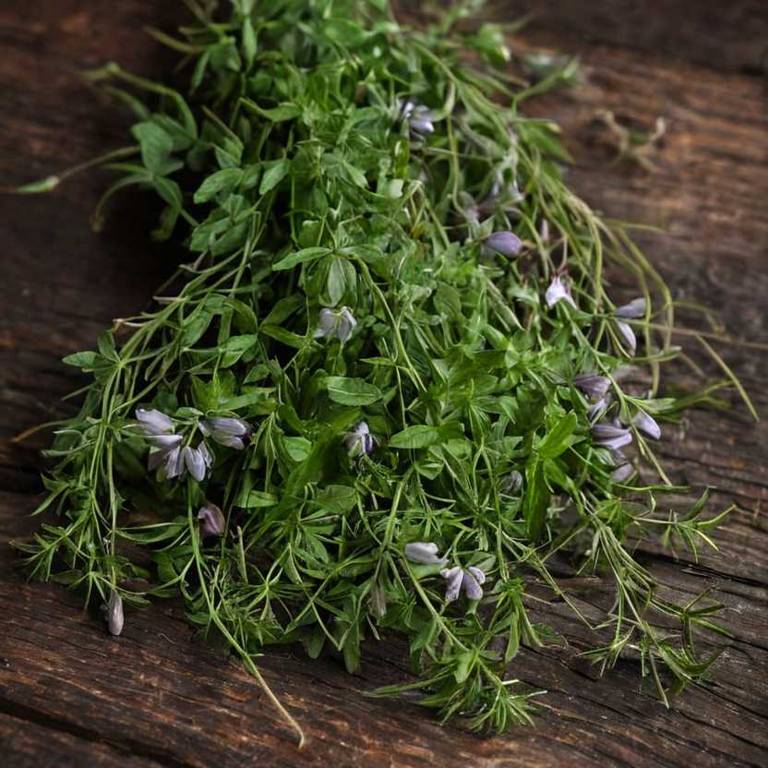By Leen Randell
Updated: Jul 10, 2024
What to know about Glehnia littoralis (beach heliotrope) before using it medicinally

Glehnia littoralis, commonly known as beach heliotrope, is a versatile herb that offers a multitude of health benefits, from reducing inflammation and promoting relaxation to supporting immune function and improving digestive health.
As a hardy perennial, this herb thrives in a variety of environments, making it a popular choice for gardeners and horticulturists alike, who appreciate its ability to adapt to different climates and soil types. Botanically, Glehnia littoralis is a member of the Apiaceae family, characterized by its distinctive umbrella-like clusters of tiny flowers and feathery foliage.
Historically, this herb has been used by various cultures, with traditional Chinese medicine referencing its use in treating a range of ailments, from arthritis to respiratory issues.
This article explains the medicinal, horticultural, botanical, and historical aspects of Glehnia littoralis.
What are the medicinal properties of Glehnia littoralis?
Glehnia littoralis helps with inflammation, pain relief, and digestive issues. Its antiseptic and anti-inflammatory properties make it effective in treating wounds, skin conditions, and respiratory problems. It is also used as a diuretic to treat urinary issues.
The active constituents of Glehnia littoralis, including sesquiterpenes and polyacetylenes, give its medicinal properties. These compounds have been shown to possess antimicrobial and antitumor activities, contributing to the plant's therapeutic effects.
The roots and leaves of Glehnia littoralis are most used for medicinal purposes, particularly in traditional Chinese medicine. The roots are used to treat digestive issues, while the leaves are used to treat respiratory problems, such as bronchitis and pneumonia.
Improper use of Glehnia littoralis can lead to side effects, including allergic reactions, digestive upset, and interactions with certain medications. Additionally, excessive consumption of the plant can cause liver and kidney damage.
Precautions when using Glehnia littoralis medicinally include consulting a healthcare professional, using it in moderation, and being aware of potential interactions with other medications. It is also essential to ensure proper identification of the plant to avoid mistaking it with lookalike species.
What are the horticulural aspects of Glehnia littoralis?
Glehnia littoralis grow in coastal areas with moderate to full sun and well-drained soil. It prefers a slightly acidic to neutral soil pH, typically between 6.0 and 7.5, and can tolerate a wide range of soil types.
For successful planting, choose a location with full sun to partial shade, and well-drained soil with a pH between 6.0 and 7.5. Plant seedlings 12-18 inches apart in the fall or early spring, and water regularly until established. Mulching around the plants can help retain moisture and suppress weeds.
Harvest beach heliotrope flowers in the summer months when they are fully open, cutting the stems just above a leaf node to promote regrowth. For foliage, harvest individual leaves or stems as needed, or cut the entire plant back to 6-8 inches tall for a new flush of growth.
Common pests of Glehnia littoralis include aphids, spider mites, and root-knot nematodes, which can be managed with neem oil, insecticidal soap, or resistant cultivars. Fungal diseases such as powdery mildew and leaf spot can be treated with fungicides, while root rot is often a result of overwatering and requires adjustment of watering habits.
What are the botanical aspects of Glehnia littoralis?
Glehnia littoralis is a perennial herb that exhibits simple, alternate leaves, 2-15 cm long, with a linear or lanceolate shape, and a glaucous, slightly wavy margin. The leaves are sessile or short-stalked. The stem is erect, 1-2 m tall, and simple or branched.
Glehnia littoralis belongs to the family Apiaceae, and its botanical classification is as follows: Kingdom: Plantae, Clade: Angiosperms, Clade: Eudicots, Clade: Asterids, Order: Apiales, Family: Apiaceae, Genus: Glehnia, Species: G. littoralis. The plant is also known as Glehnia littoralis Turcz.
Variants of Glehnia littoralis include var. littoralis and var. tenuifolia, which differ in their leaf shape and size. The leaves of var. tenuifolia are narrower and longer than those of var. littoralis.
Glehnia littoralis is native to the Pacific coastal regions of North America, specifically in the states of California, Oregon, and Washington, as well as in British Columbia, Canada. It is also found in Japan and Russia.
The life cycle of Glehnia littoralis begins in spring, when the plant produces small, white flowers in umbrella-like clusters. The flowers are followed by fruit, which is a dry, ribbed schizocarp that splits into two mericarps at maturity. The seeds are dispersed in late summer and fall.
What are the historical aspects of Glehnia littoralis?
Glehnia littoralis is a plant that has been used for medicinal purposes by various cultures. In traditional Chinese medicine, it is used to treat fever, rheumatism, and respiratory problems. In Japan, it is used to make teas and infusions.
In Japanese mythology, Glehnia littoralis is associated with the goddess of the sea, Benzaiten, who is revered for her power to grant fertility and prosperity. According to legend, the plant's ability to thrive in coastal areas is a reflection of Benzaiten's blessing.
In various cultures, Glehnia littoralis is considered a symbol of resilience and adaptability. In some societies, it is seen as a representation of the ability to thrive in harsh environments, while in others, it is associated with the cycles of nature and the passage of time.
The historical texts that mention Glehnia littoralis include the Bencao Gangmu, a 16th-century Chinese pharmacopoeia, and the Honzō Chōsho, a 17th-century Japanese medical text. These texts provide information on the plant's uses, properties, and cultivation.
Historical artifacts that feature Glehnia littoralis include ancient Chinese ceramic vessels adorned with depictions of the plant and Japanese woodblock prints showcasing the plant's coastal habitats. These artifacts demonstrate the plant's significance in the art and culture of various societies.